The Ultimate Guide to Venue Setup and Layout Tips: Plan Like a Pro, Party Like a Host
Understanding Your Space: The Foundation of a Perfect Party Layout
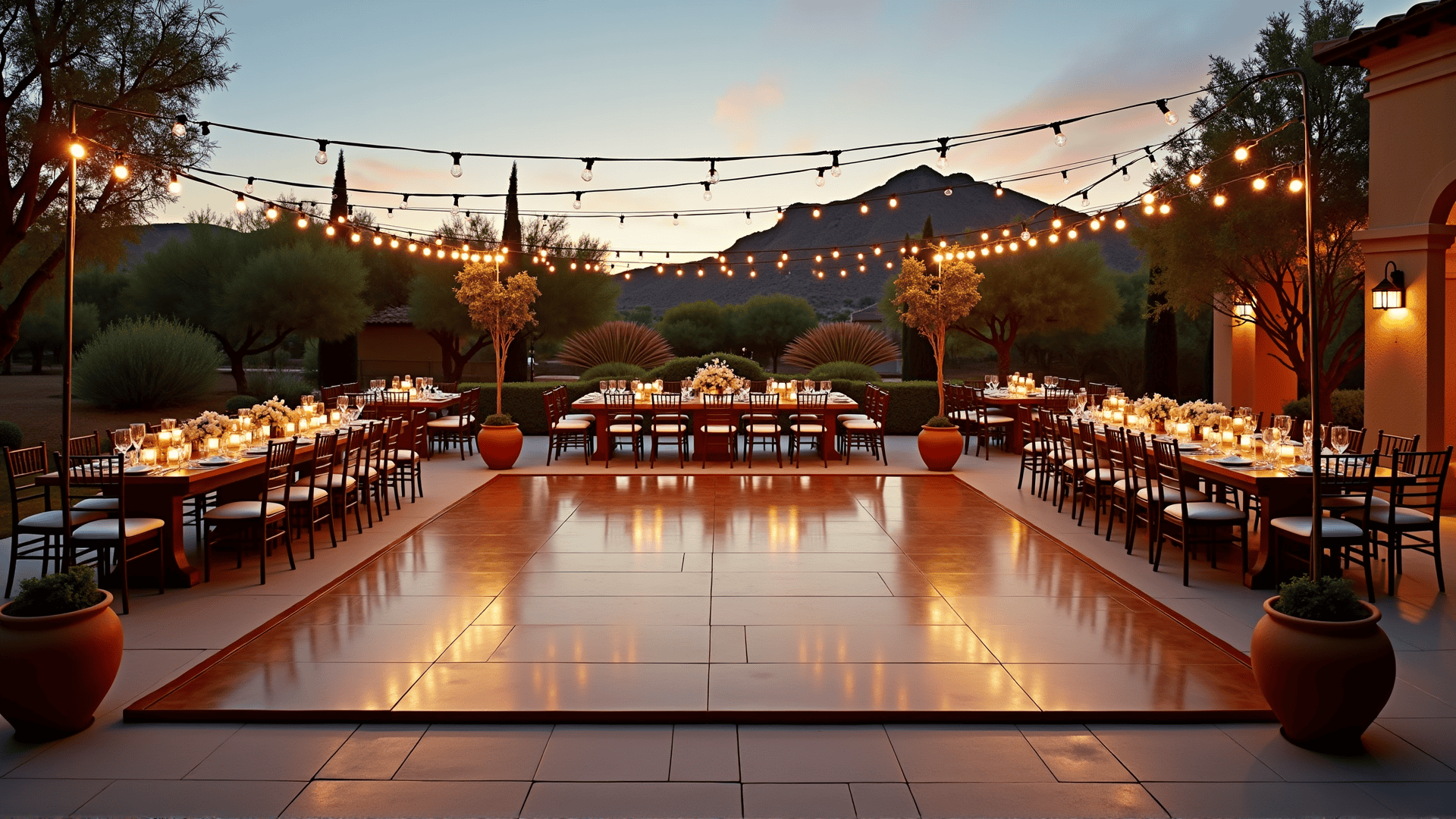
Let me tell you something I've learned after countless events: understanding your venue space is like getting to know a dance partner. Every space has its own personality, quirks, and hidden potential. Just last month, I helped transform what seemed like an awkward L-shaped backyard into a stunning wedding reception that had guests raving about the "intentional" intimate dining zones!
Getting Your Measurements Right
First things first - accurate measurements are your best friend. I can't tell you how many times I've seen perfect party visions crumble because someone eyeballed the space. That 200-person corporate cocktail party you're envisioning? Let's make sure your venue can actually hold that many people comfortably.
Pro tip: always measure with the furniture and decor footprint in mind, not just the raw space.
Working with What You've Got
Every venue comes with its own set of features that can either enhance or challenge your layout:
Indoor Spaces:
- Look for natural focal points (fireplaces, windows, architectural details)
- Note ceiling heights (crucial for tall centerpieces or lighting installations)
- Locate power outlets (trust me, your DJ will thank you)
- Identify load-in paths (those beautiful farm tables need a way in!)
Outdoor Spaces:
- Map out level ground areas (nobody wants a wobbly table)
- Note natural shade spots (perfect for summer afternoon events)
- Consider existing landscaping (which can reduce your decor budget)
- Plan for weather protection (always have a Plan B)
Traffic Flow: The Silent Party Maker
Think of traffic flow as the rhythm of your event. Just like you wouldn't want everyone cramming onto the dance floor at once, you don't want bottlenecks at crucial points. Map out your guest's journey:
- Where will they enter?
- How will they move between activities?
- Where might they congregate?
Here's a little trick I use: Imagine releasing a handful of marbles at the entrance point. Where would they naturally roll? That's often your natural traffic flow pattern.
The Power of Light and Architecture
Natural light can be your best friend or worst enemy. That wall of windows might create a gorgeous sunset backdrop for your wedding ceremony, but come dinner time, your guests might be squinting through their soup. Work with the sun's path and existing architectural features to create moments of impact.
Remember, understanding your space isn't just about making things fit—it's about creating an environment where memories can flourish. Whether you're planning an intimate backyard anniversary celebration or a grand corporate gala, taking the time to truly know your space will set the foundation for an extraordinary event.
Essential Layout Fundamentals: The Building Blocks of a Perfect Party Space
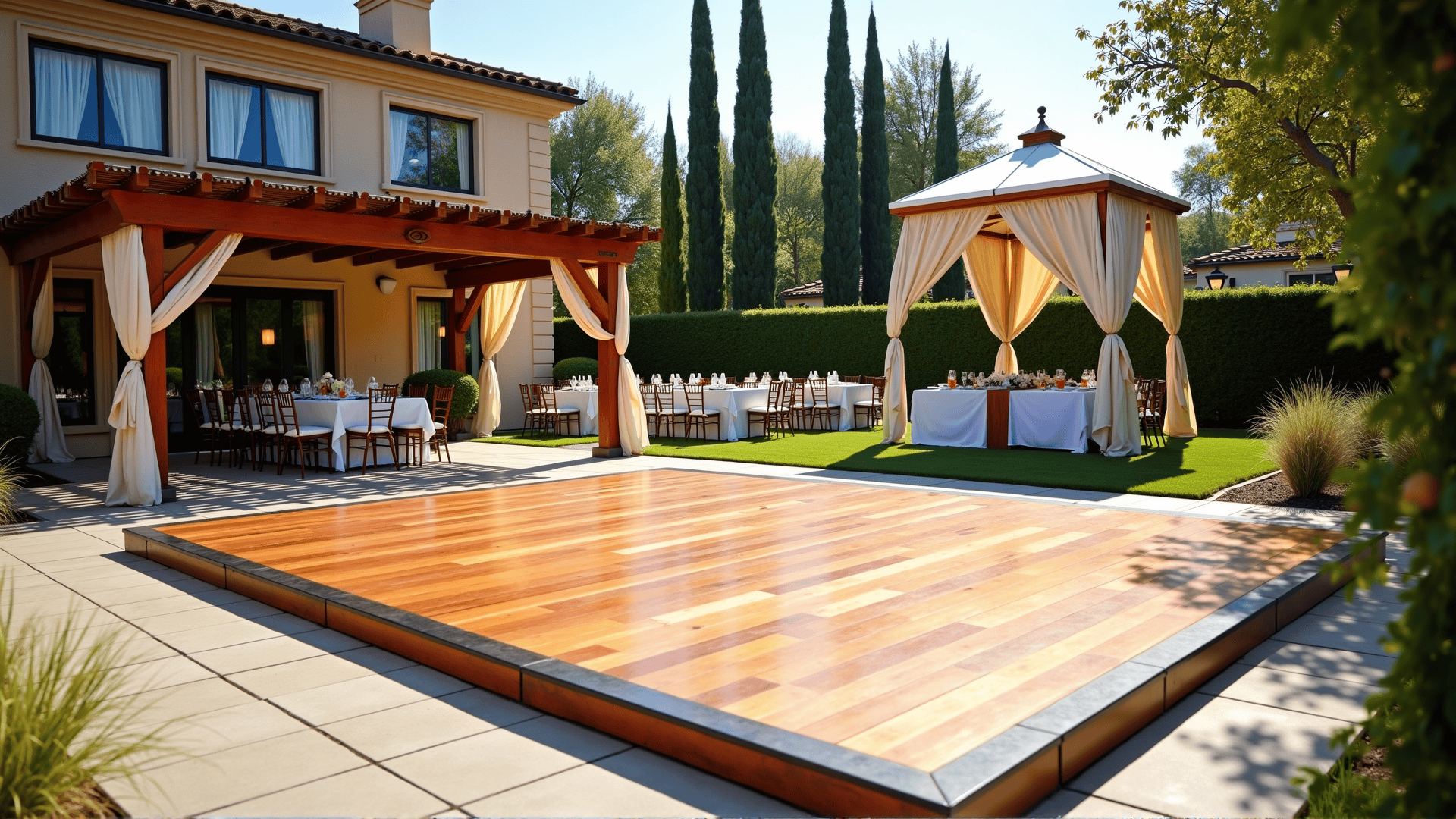
Think of party layout like a game of Tetris – except instead of falling blocks, you're arranging tables, chairs, and dance floors. And trust me, getting these fundamentals right is the difference between a smooth-flowing celebration and what I like to call the "sardine scenario" (nobody wants their guests packed like tinned fish!).
Getting Your Numbers Right
Let's talk space math – but don't worry, this is the fun kind! Here's what you need per person:
- Seated dinner: 12-15 square feet
- Cocktail style: 8-10 square feet
- Dance floor: 4-5 square feet per dancing guest
- Buffet lines: 3 feet wide per line of traffic
Pro tip: Always plan for about 40% of your guests to be dancing at any given time. I learned this the hard way at a wedding where the entire guest list hit the dance floor at once – let's just say the Electric Slide got a bit too electric!
The Space Between
Remember this golden rule: circulation space is not optional – it's essential. Here are my non-negotiable minimums:
- Main aisles: 6 feet wide
- Secondary aisles: 4 feet wide
- Space between tables: 5 feet (measured chair back to chair back)
- Distance to walls: 3 feet minimum
Safety First, Party Second
Nothing kills the vibe faster than safety hazards. Here's what you absolutely must consider:
- Clear paths to all emergency exits
- Minimum 4-foot-wide emergency exit routes
- Unobstructed access to fire extinguishers
- Clear sightlines to exit signs
Making Space for Everyone
Accessibility isn't just about compliance – it's about ensuring everyone can enjoy your celebration. Always plan for:
- 36-inch-wide minimum pathways
- 5-foot turning radius in key areas
- Ramp access where needed
- Accessible seating distributed throughout
A real-world lesson: At a recent corporate event, we created what we called "conversation pockets" – accessible spaces throughout the venue where guests in wheelchairs could easily join any group discussion. The feedback was incredible, and it's now a standard part of our corporate layouts.
The 2/3 Rule
Here's my favorite layout secret: never fill more than 2/3 of your space with furniture and dedicated areas. That remaining 1/3 is what I call "breathing room" – it's what makes a layout feel spacious rather than stuffed. This rule has saved countless events from feeling cramped, even with a full guest list.
Remember, these fundamentals aren't just guidelines – they're the framework that allows all the magical moments of your event to unfold naturally. Whether you're planning an intimate anniversary dinner or a large corporate gathering, getting these basics right sets the stage for everything else.
Seating Arrangements That Work: The Art of Guest Comfort
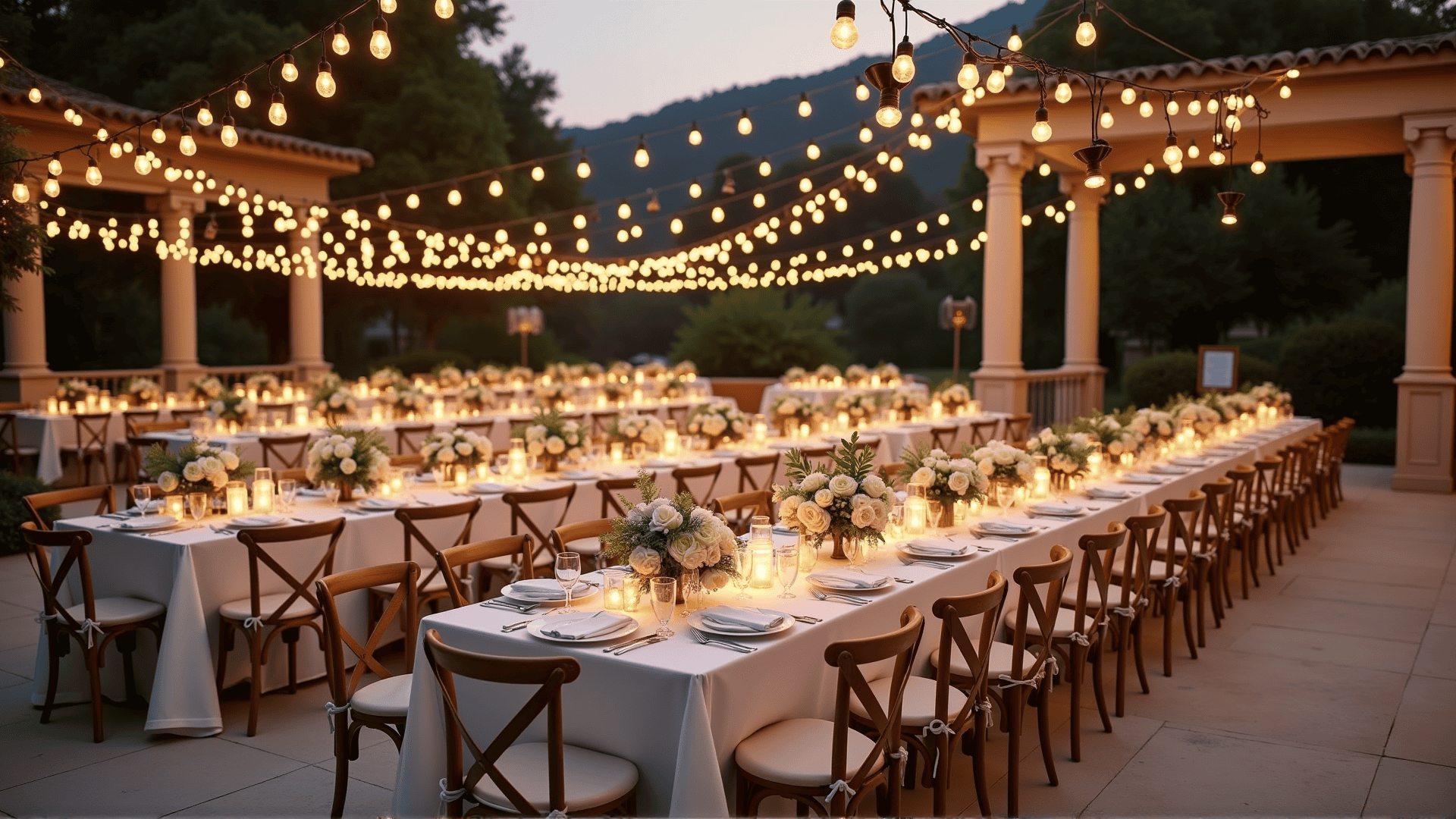
I always say that seating arrangements are like a chess game – every piece matters, and the right strategy can make all the difference between checkmate and stalemate. Let's dive into the secrets of creating seating arrangements that keep your guests comfortable and the conversations flowing.
Round vs. Rectangular: The Great Table Debate
Round Tables (The Social Butterflies)
- Perfect for conversation (everyone can see each other)
- Ideal for 8-10 guests comfortably
- Great space efficiency in most rooms
Pro tip: 60-inch rounds are the sweet spot for most events
Rectangular Tables (The Statement Makers)
- Create stunning visual lines
- Perfect for family-style dining
- Excellent for photographable moments
Pro tip: 8-foot tables seat 8-10 guests comfortably
Spacing: The Invisible Comfort Zone
Think of table spacing like personal space – too close and it's awkward, too far and conversation dies. Here's what works:
- 60-inch rounds: 5-6 feet between table edges
- Rectangular tables: 6 feet between parallel tables
- Chair to wall clearance: minimum 30 inches
- Service access: 36 inches for staff to move freely
Real talk: I once witnessed a wedding where the tables were so tight, a guest couldn't leave their seat without the entire row standing up. Don't be that party!
Mixed Seating Magic
Here's a secret that's revolutionized modern events: you don't have to stick to one table type! Consider:
- Rounds for main dining
- High cocktail tables for mingling
- Lounge seating for comfort
- Long harvest tables for the head table
VIP and Special Guest Placement
When dealing with VIPs (like the boss at a corporate event or grandparents at a wedding), consider:
- Easy access to their seats
- Clear paths to restrooms
- Good views of any entertainment
- Comfortable distance from speakers/music
The "Golden Rules" of Seating
- Never seat guests facing walls
- Keep families with young children near exits
- Create clear paths between tables
- Allow extra space for wheelchairs when needed
- Consider sightlines to any presentations or performances
A lesson learned: At one milestone birthday party, we created what we called "conversation islands" – mixing table heights and styles to naturally encourage movement and mingling throughout the night. The result? A perfectly balanced party where no one felt stuck in their seat.
Remember, these are guidelines, not rigid rules. The best seating arrangement is one that matches your event's vibe while keeping guests comfortable. Whether you're planning an intimate garden party or a grand corporate gala, the key is to think about how your guests will actually use the space.
Creating Activity Zones: The Secret to Party Flow
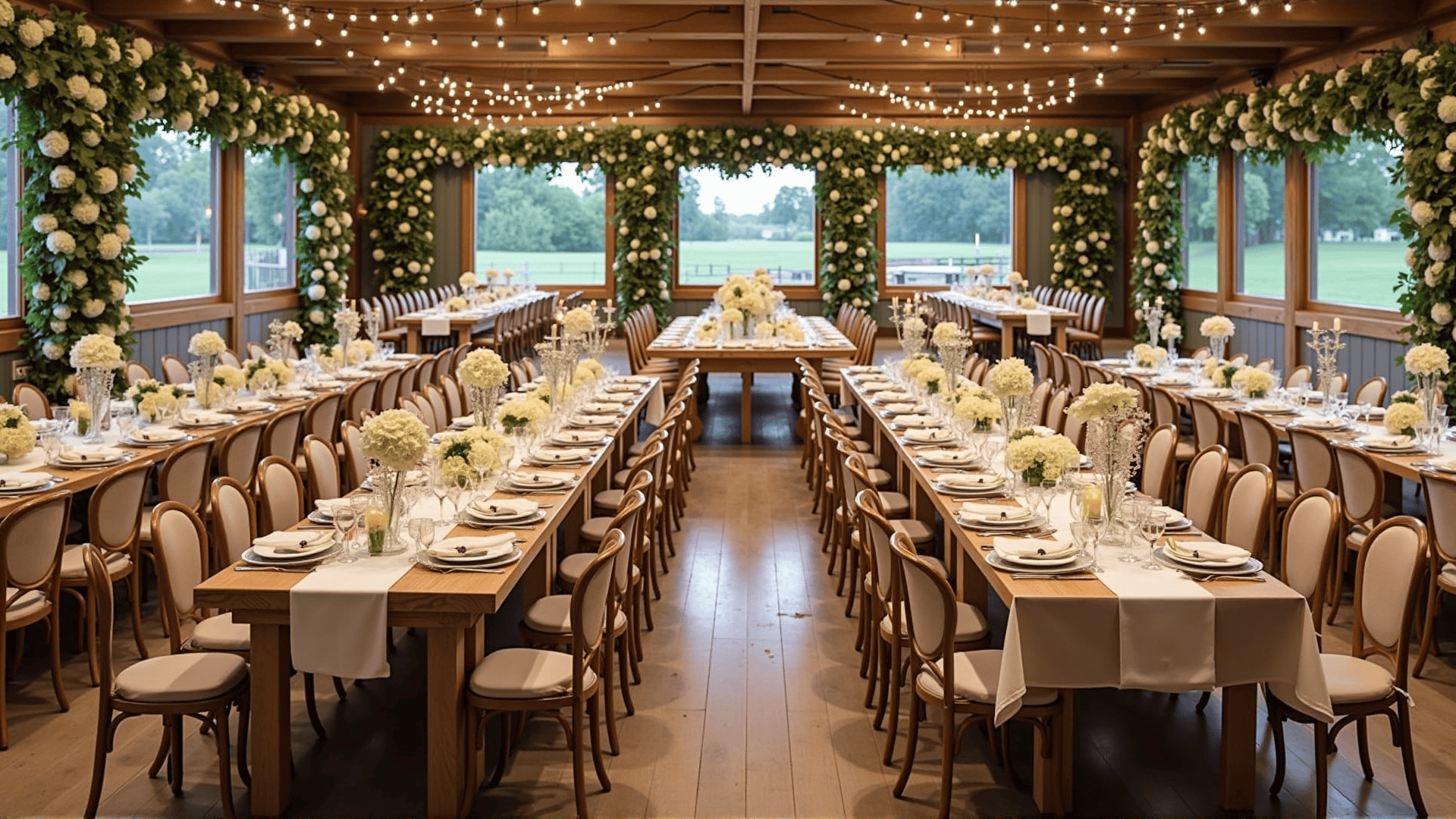
Think of your event space as a small city – each area has its own purpose, personality, and population! I've seen countless events transformed from good to extraordinary simply by thoughtfully planning these "neighborhoods" of activity. Let's explore how to create zones that keep your party flowing smoothly.
Welcome Zone: First Impressions Matter
Your entry area sets the tone for the entire event. Consider:
- Guest book/check-in station
- Welcome drinks station
- Coat check area (if needed)
- Clear directional signage
Party Rental Los Angeles CA : Always position your welcome zone where it won't create a bottleneck. Think of it as a friendly highway entrance ramp – merge smoothly, don't cause traffic!
The Social Hub: Bar & Beverage Stations
Bars are like party magnets – people will naturally gather here. Plan accordingly:
- Position away from the entrance to prevent congestion
- Allow 3 feet per 50 guests for bar length
- Create a natural flow with high-top tables nearby
- Consider satellite bars for larger events
A lesson from experience: At a recent corporate holiday party, we created what we called "beverage boulevards" – multiple smaller drink stations themed by beverage type. No lines, happy guests!
Dining Districts
Whether it's a seated dinner or casual buffet, dining zones need careful planning:
- Buffer space between dining and dancing areas
- Clear paths for service staff
- Easy access to food stations
- Logical flow from appetizers to desserts
The Energy Center: Dance Floor & Entertainment
This is your party's heartbeat! Place it where it:
- Won't disrupt dining conversations
- Has good visibility from most areas
- Allows easy access to/from the bar
- Creates natural photo opportunities
Conversation Corners
Every great party needs quiet spots for catching up:
- Lounge areas with comfortable seating
- Quiet nooks away from music
- Mixed seating heights for variety
- Good lighting for face-to-face chats
Photo-Worthy Moments
Create Instagram-able spots that don't disrupt flow:
- Well-lit areas for natural photos
- Designated photo backdrops
- Clear space for group shots
- Easy access without blocking traffic
Here's a trick I love: Create what I call "flow-through features" – beautiful spots that people can enjoy without creating congestion. Think elevated displays, hanging installations, or creative lighting that can be appreciated while moving through the space.
Practical Zones (The Unsung Heroes)
Don't forget about:
- Easily accessible restrooms
- Coat check areas (seasonal)
- Space for vendors to set up/break down
- Emergency exit paths
Remember, the key to successful activity zones isn't just about creating them – it's about how they work together. Like a well- conducted orchestra, each section should complement the others while playing its own distinct part in the event's symphony.
Whether you're planning a milestone birthday bash or an elegant corporate gathering, thoughtful zone planning will help your event flow naturally and keep your guests engaged throughout the celebration.
Food & Beverage Station Success: Keep Your Guests Happy and Moving
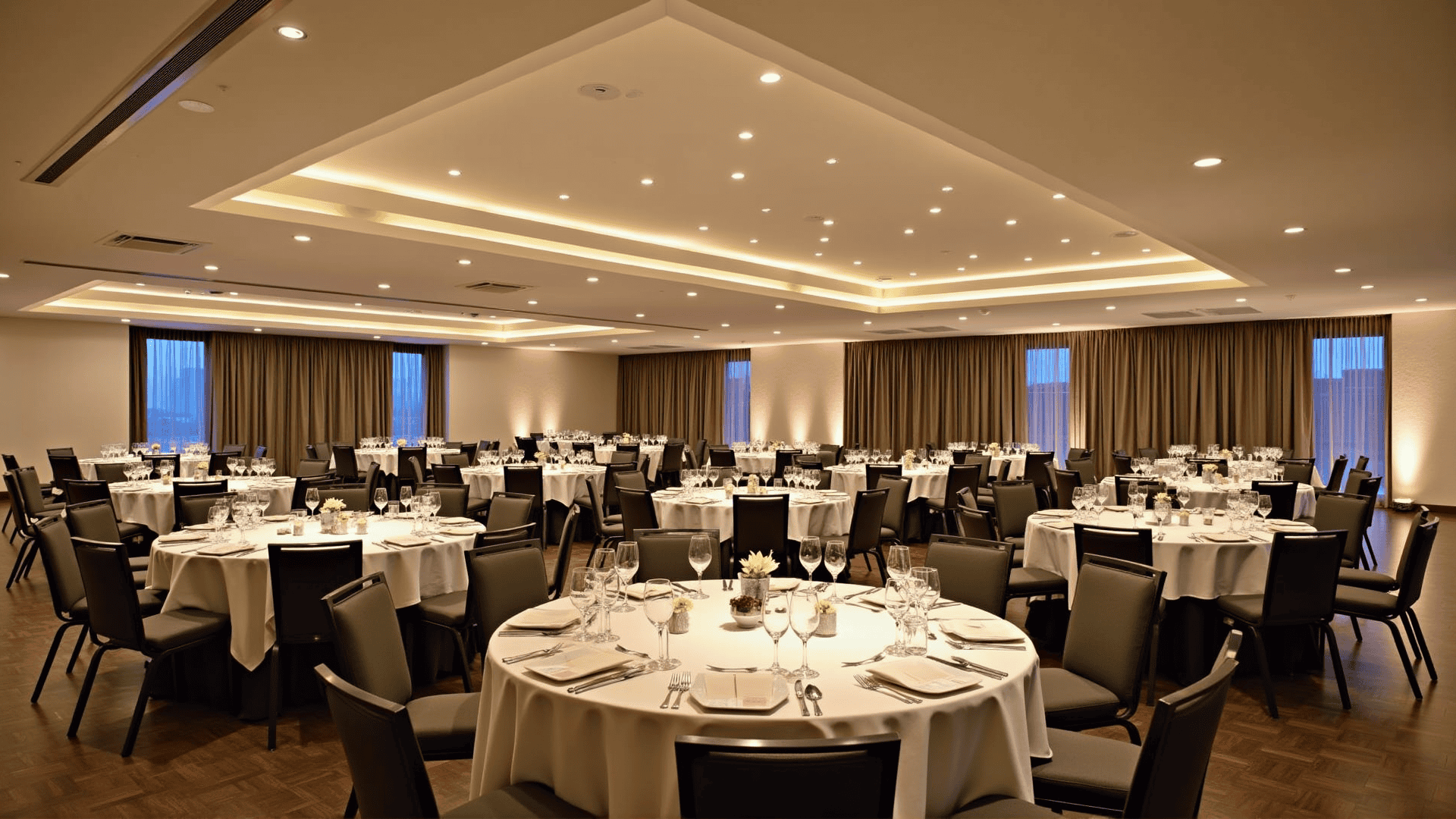
Let's talk about one of the most crucial elements of any successful event – the food and beverage stations. If I had a dollar for every time I've seen a beautiful event marred by poorly planned food stations, well... let's just say I could cater quite a party!
Buffer Space: The Line-Up Logic
Think of your buffet line like airport security (but much more enjoyable!). You need:
- 3 feet per person in line
- Space for plates at the start
- Room for "decision makers" to pause
- Clear paths to exit with full plates
Pro tip: For every 100 guests, plan for at least 15-20 people to be in line at peak times. I once saw a 300-person corporate event with only 10 feet of queue space – it wasn't pretty!
Double-Sided Buffet Magic
Want to cut your buffet line time in half? Here's how:
- Place identical items on both sides
- Clear signage above both sides
- Center decorative elements between sides
- Allow 6-8 feet width for guest access
A game-changing setup: For a recent wedding, we created what I call the "butterfly buffet" – two mirror-image stations that spread out like wings, serving 250 guests in under 30 minutes!
Strategic Bar Placement
Your bar is like the town square – everyone will visit it! Position it:
- Away from food stations
- With clear paths to bathrooms
- Visible from most areas
- Near high-top tables for drink placement
Server Success Paths
Think of server paths like secret passages in a castle:
- Clear routes to kitchen/prep areas
- Designated busing stations
- Easy access to all tables
- Separate paths from guest traffic
Smart Station Layout Tips
For smooth service flow:
- Place utensils at the end (prevents line slowdown)
- Position drinks separate from food
- Create separate dessert stations
- Include trash/busing stations strategically
Here's a secret: Create what I call "comfort corners" – small standing tables near (but not too near) food stations where guests can pause to adjust their plates or take that first bite.
Hidden Heroes: Trash & Busing
Nobody wants to see these, but everyone needs them:
- Discrete busing stations near eating areas
- Hidden trash bins at strategic points
- Clear paths for staff access
- Easy guest access without being obvious
Remember, the success of your food and beverage stations isn't just about the cuisine – it's about creating an experience that lets your guests focus on enjoying themselves rather than navigating logistics. Whether you're planning an intimate anniversary dinner or a large corporate gathering, these principles will help keep your event flowing smoothly.
Lighting For Impact: Setting the Right Mood for Your Event
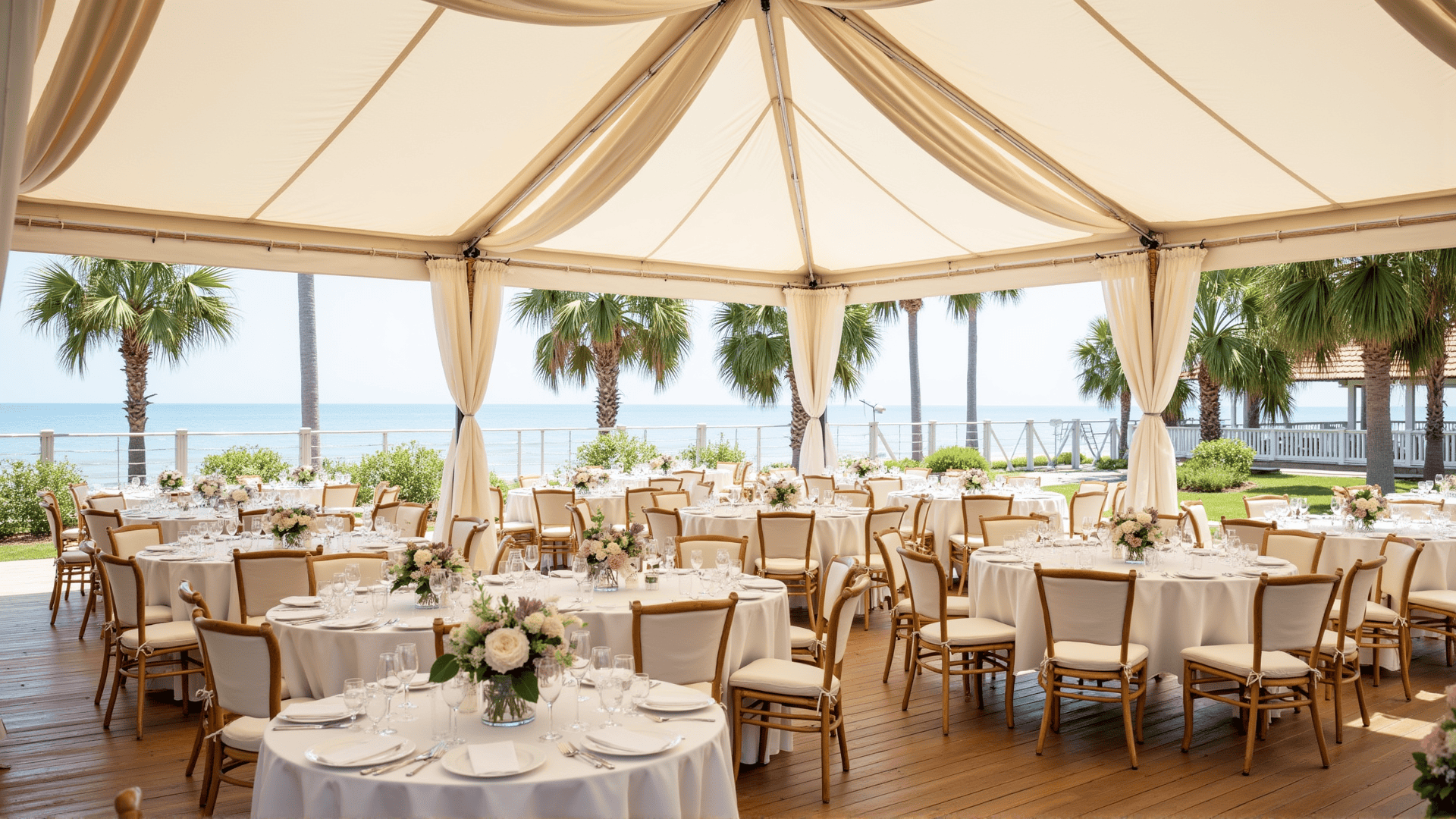
If there's one element that can instantly transform a space from ordinary to extraordinary, it's lighting. I like to think of lighting as the conductor of your event's orchestra – it sets the tempo, creates the mood, and brings all the elements together in perfect harmony.
Task vs. Ambient: The Dynamic Duo
Think of lighting like layers in a cake:
1. Task Lighting: Your practical layer
- Food station illumination
- Bar area visibility
- Safety lighting for steps/paths
- Registration/entry lighting
2. Ambient Lighting: Your mood creator
- Soft uplighting on walls
- Gentle table lighting
- Area washes for atmosphere
- Architectural feature highlighting
Discover the LA Party Rental That's Making Millennial Dreams Come True: Never sacrifice function for aesthetics. I once saw a beautifully dim wedding reception where guests couldn't see what they were eating – not exactly the memory you want to create!
Outdoor Lighting Mastery
When lighting outdoor spaces, think in terms of:
- Path lighting for safety (every 8-10 feet)
- Perimeter definition lighting
- Tree/landscape uplighting
- Emergency backup lighting
A magical touch: At a recent garden party, we created what I call "starlight paths" – subtle ground lighting guiding guests between activity areas. The effect was both practical and enchanting.
Creating Atmosphere Through Light
Different events need different moods:
- Corporate events: Clean, bright, professional
- Weddings: Warm, romantic, dramatic
- Milestone celebrations: Festive, dynamic, playful
- Cocktail parties: Intimate, sophisticated, subdued
Feature Highlighting
Use lighting to draw attention to:
- Special displays or installations
- Food and beverage presentations
- Photo opportunities
- Entertainment areas
- Architectural details
Here's a secret: Create what I call "light landscapes" – varying levels of brightness that naturally guide guests through your event space, just like a well-designed garden leads visitors through its paths.
Dance Floor Dynamics
Your dance floor lighting should:
- Be bright enough for safety
- Create energy and movement
- Complement your music
- Avoid harsh spots or shadows
Remember, lighting isn't just about brightness – it's about creating an experience that evolves with your event. Start brighter during arrival and dining, then transition to more intimate lighting as the evening progresses. Think of it as choreographing the perfect evening through light.
Whether you're planning an elegant backyard wedding or a corporate gala, thoughtful lighting design will elevate your event from good to unforgettable. Consider consulting with lighting professionals who can help bring your vision to life – they'll know exactly how to make your
Weather Considerations: Planning for Mother Nature's RSVP
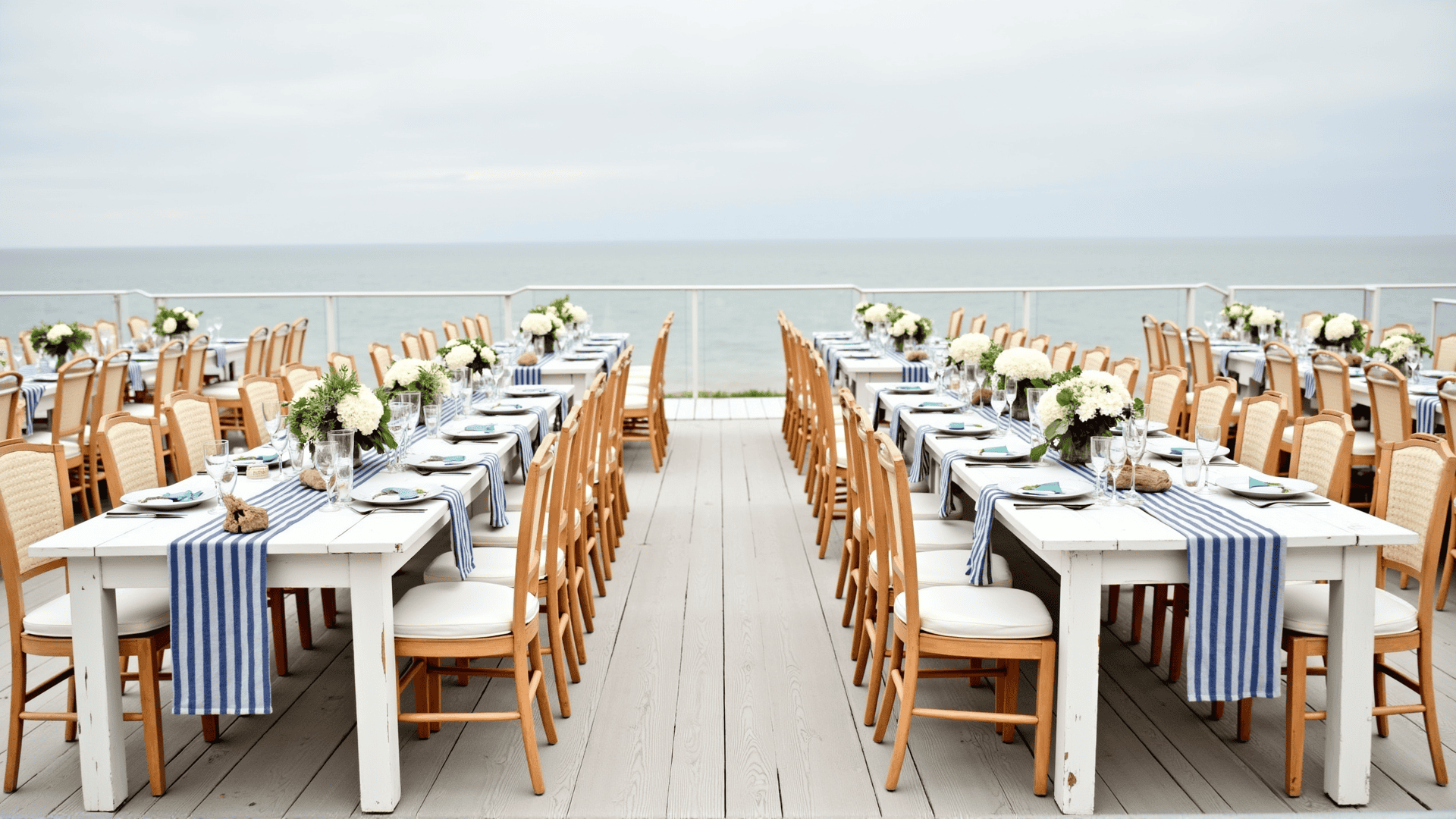
Let me tell you something about weather and events – it's not about if it will surprise you, but when! I've seen sunny forecasts turn into surprise showers and gentle breezes become unexpected guests at outdoor celebrations. But with proper planning, weather doesn't have to rain on your parade.
Indoor/Outdoor Transition Spaces
Think of transition areas as your event's insurance policy:
- Covered walkways between spaces
- Tented entrance and exit points
- Pop-up coverage zones
- Clear paths to indoor backup spaces
Real-world wisdom: At a garden wedding last summer, we created what I call "weather bridges" – covered pathways that turned into impromptu cocktail spaces during a surprise shower. The guests thought it was part of the plan!
Rain Plan Perfection
Every outdoor event needs a solid Plan B:
- Indoor backup location identified
- Quick-deploy tent solutions
- Clear guest communication plan
- Vendor backup strategies
Pro tip: Never wait until rain starts to implement your backup plan. I always say, "When you see the clouds, start the moves."
Temperature Control Tactics
Keep your guests comfortable in any weather:
- Portable heaters for cool evenings
- Fans and misters for hot days
- Shade solutions for sunny spots
- Blanket stations for evening chill
Wind Protection Strategies
Wind can be your event's uninvited guest. Protect against it with:
- Weighted décor elements
- Secured lighting fixtures
- Protected food stations
- Anchored tent structures
A lesson learned: I once watched a beautiful balloon arch become a neighborhood decoration due to unexpected wind. Now I always say, "If it can fly, it will try!"
Emergency Backup Options
Always have these ready:
- Backup power sources
- Emergency lighting
- Quick-deploy coverage solutions
- Vendor contingency plans
Remember the 30/30/30 rule:
- Check weather 30 days out
- Recheck 30 hours before
- Be ready to adjust within 30 minutes
Smart strategy: Create what I call "weather windows" in your timeline – flexible periods where activities can be shifted earlier or later based on weather conditions.
Whether you're planning a milestone birthday in your backyard or a corporate event in a garden venue, weather preparation isn't just about having a Plan B – it's about having Plans B through Z! The key is to plan so thoroughly that your guests never realize you're implementing backup plans.
Flow Management: The Art of Keeping Your Party Moving
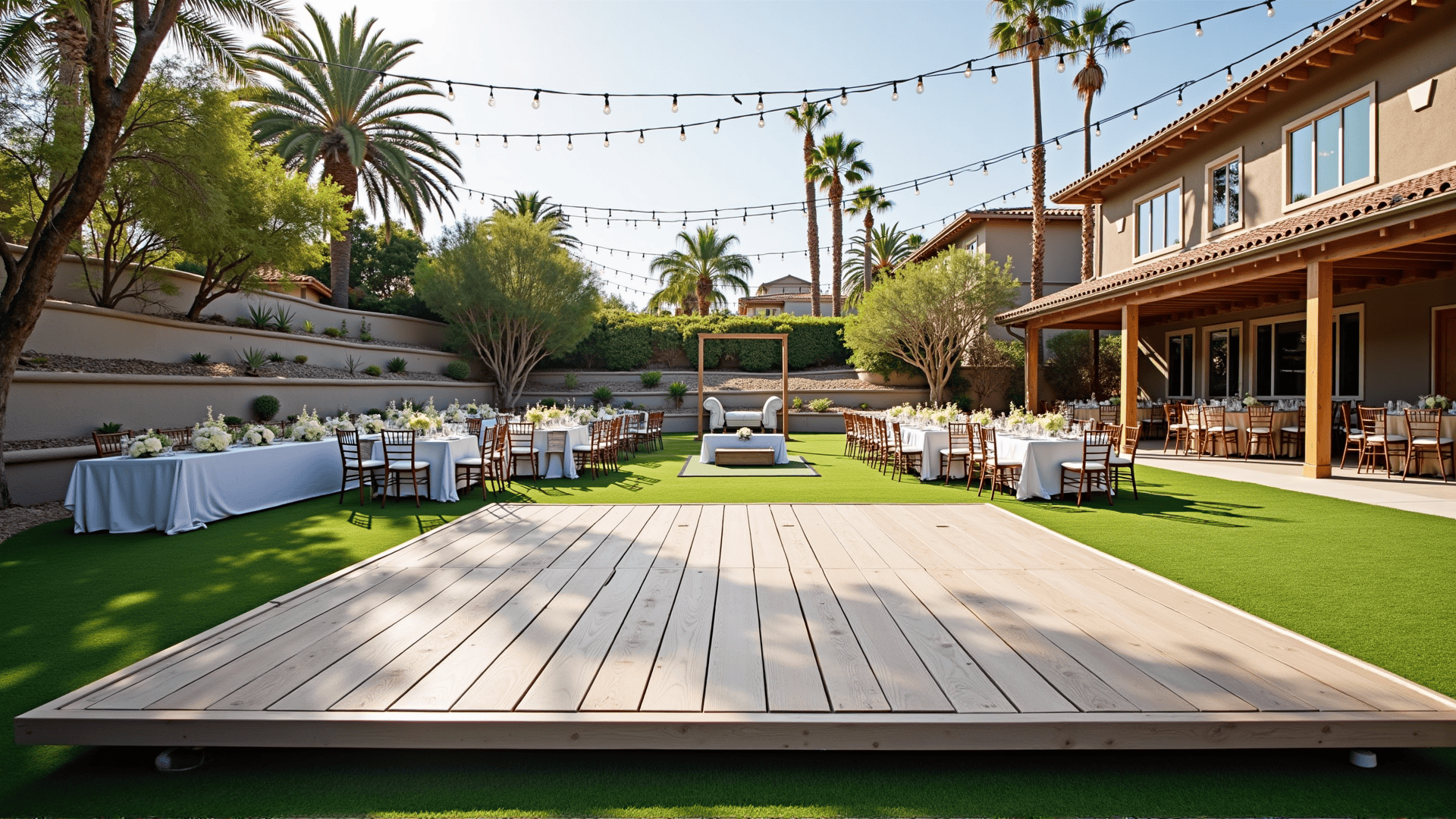
Think of your event's flow like a carefully choreographed dance – when it's done right, everyone moves effortlessly through the space, and when it's off... well, let's just say I've seen enough party traffic jams to last a lifetime!
Guest Arrival Patterns
First impressions matter! Plan your entrance flow like this:
- Wide welcome area (minimum 8 feet)
- Clear directional indicators
- Multiple check-in stations for large events
- Immediate sight lines to key areas
Pro tip: Create what I call a "decompression zone" – a beautiful open space just past the entrance where guests can pause, orient themselves, and spot familiar faces.
Natural Traffic Paths
Guide your guests without them realizing it:
- Position bars visible from entrance
- Create curved or angled paths
- Use furniture groupings as subtle barriers
- Place popular elements strategically
A recent success story: At a corporate anniversary event, we created "attraction chains" – linking popular spots like the bar, food stations, and photo areas in a natural progression that kept guests moving without clustering.
Bottleneck Prevention
Common congestion points to watch for:
- Bar areas (especially during toasts)
- Buffet lines
- Photo opportunities
- Restroom access
- Popular seating areas
Here's a secret: Use what I call the "Rule of Thirds" – divide your space into thirds and ensure key attractions are spread across all sections.
Service Staff Routes
Your behind-the-scenes choreography matters:
- Dedicated server pathways
- Clear routes to kitchen/prep areas
- Designated busing stations
- Staff-only shortcuts
Emergency Evacuation Paths
Safety first, always:
- Multiple exit routes
- Clear path markings
- Unobstructed emergency access
- Staff emergency stations
Real talk: The best flow plans are the ones guests never notice. At a recent wedding, we handled 300 guests moving from ceremony to cocktail hour to reception, and the couple later told me they had no idea we'd designed specific pathways for each transition!
Remember, good flow management is about anticipation. Think of your event like a river – it should have both areas of movement and quiet pools where people can pause and enjoy themselves. The key is creating a space where guests naturally know where to go next without feeling herded or confused.
Pro Setup Tips: The Insider's Guide to Flawless Event Layouts
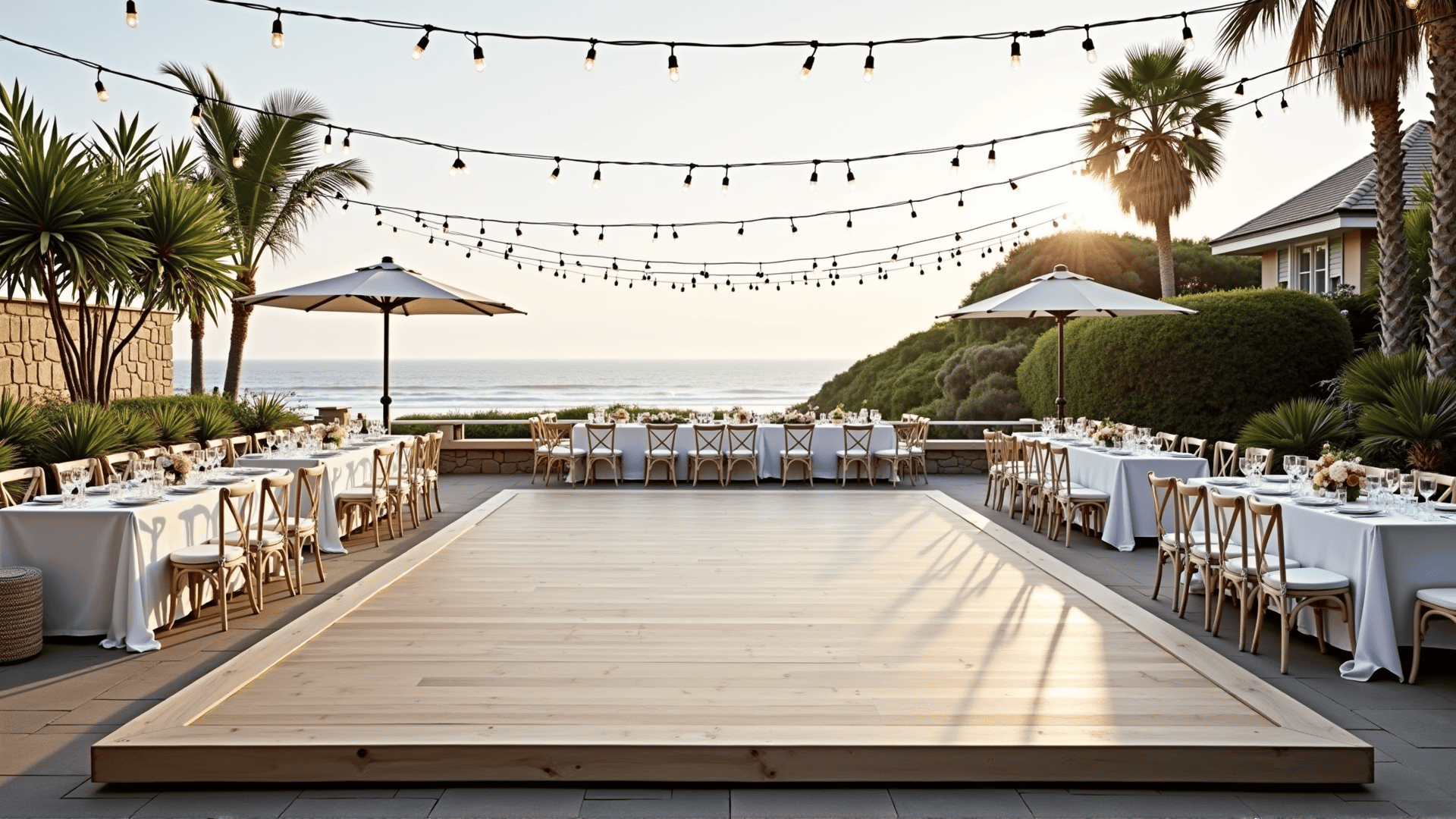
Let me tell you a secret: the difference between a good event and an extraordinary event often comes down to what happens behind the scenes. I've seen countless events transform from potential disasters to magical experiences, all thanks to meticulous pre-event planning and day-of execution.
The Pre-Event Walkthrough: Your Event's Insurance Policy
Think of your pre-event walkthrough like a dress rehearsal for a Broadway show. You wouldn't send actors on stage without a final run-through, would you? Walk through your entire venue, measuring twice and setting up once. Pro tip: Take photos of your initial setup as a visual reference. I once saved a wedding reception by catching a potential lighting issue during my walkthrough that would have cast awkward shadows on the dance floor.
Your Essential Walkthrough Checklist:
- Verify all measurements
- Test every power outlet
- Check lighting from multiple angles
- Confirm equipment functionality
- Map out potential problem areas
The Day-of Timeline: Your Event's Heartbeat
A robust timeline is your best defense against chaos. Break down your setup into precise, manageable chunks:
- Early Morning: Venue preparation
- Mid-Morning: Major structural elements
- Pre-Event: Final touches and detailing
- Event Start: Final system checks
Strategic Equipment Placement: The Art of Invisible Infrastructure
Equipment should enhance, not interrupt. Think of your event layout like a beautifully choreographed dance - every piece needs to be in the right place at the right time. Common Placement Strategies:
- Position audio equipment to provide even sound coverage
- Place bars and food stations to encourage natural guest flow
- Create strategic pathways that feel intuitive, not forced
Avoiding Common Pitfalls: Lessons from the Trenches
We've all been there - those moments when you're holding your breath, hoping nothing goes wrong. Here are some hard-earned insights:
- Always Have a Backup Plan: Whether it's extra extension cords, backup speakers, or emergency lighting, redundancy is your friend.
- Anticipate Guest Behavior: People will naturally gravitate to certain areas. Use this to your advantage in your layout.
- Comfort is King: Ensure enough space between tables, clear pathways, and comfortable seating arrangements.
Quick Problem-Solving: When Murphy's Law Strikes
Sometimes, despite perfect planning, things go sideways. The key is to:
- Stay calm
- Have a versatile team
- Keep essential repair and adjustment tools nearby
- Be prepared to make quick, decisive changes
Remember, an event is like a live performance. The audience should never see the work happening behind the curtain - they should only experience the magic.
Final Wisdom: Preparation doesn't guarantee perfection, but it dramatically increases your chances of hosting an unforgettable event.
Keys to Event Success: Your Ultimate Guide to Flawless Party Planning
Planning the perfect event isn't just about details - it's about creating unforgettable moments. Throughout this guide, we've shared insider secrets that transform ordinary gatherings into extraordinary experiences. But knowledge without execution is just information.
Your Event Planning Timeline Matters
Every successful event follows a strategic timeline:
- 3-6 Months Before: Conceptualize and start major planning
- 2 Months Before: Confirm critical logistics
- 1 Month Before: Finalize details and begin final preparations
- Week of Event: Execute with precision and confidence
Why Professional Consultation Makes All the Difference
Think of us as your event's secret weapon. We've navigated every possible scenario - from windswept outdoor weddings to corporate galas with complex technical requirements. Our expertise turns potential challenges into seamless experiences.
What Sets Us Apart
- Comprehensive Planning: We don't just provide equipment; we create experiences
- Adaptable Solutions: No two events are identical, and neither are our approaches
- Stress-Free Execution: We handle the complexities so you can enjoy the moment
Your Event Deserves Expert Attention
Whether you're planning:
- A dream wedding
- A high-stakes corporate event
- An intimate milestone celebration
- A backyard party that becomes the talk of the neighborhood
We have the skills, experience, and passion to elevate your vision.
Final Checks That Guarantee Success
- Confirm every detail
- Have a flexible backup plan
- Trust professional guidance
- Remain excited about your event
Ready to Transform Your Event?
Stop wondering and start planning. Your perfect event is just a phone call away.
Call Us Now: (213) 373-1730 or visit our contact us page
Don't leave your special day to chance. We're ready to turn your event dreams into reality. Our team is standing by to provide a complimentary consultation and help you navigate every aspect of your upcoming celebration.
Time is your most valuable resource. The sooner you reach out, the more seamlessly we can bring your vision to life. Whether you're a professional event planner, a venue manager, or someone celebrating a once-in-a-lifetime moment, we're your partner in creating magic.
Don't Wait - Your Perfect Event Starts Today!

